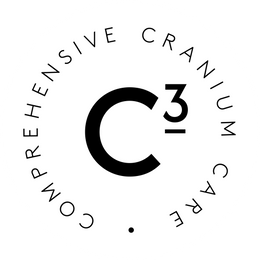You Are Never Alone
Throughout most of history, humans assumed that the surfaces of walls, food, and people were just as they appeared- flat and lifeless. Imagine the shock that Antonie Van Leeuwenhoek experienced when he looked through his janky handmade microscope and saw billions of tiny “animalcules” crawling around. He became the first person to realize that we are much less alone on this planet than we ever imagined.
Microbiology has come a long way from Leeuwenhoek’s first observations. Over time, scientists discovered that we are constantly surrounded by countless tiny creatures. Microbes like bacteria, fungi, and viruses cover everything we see. They’re in the air and on all of us.
Eventually, scientists learned that some of these tiny critters could make us sick. These “pathogenic” microbes gave their friendly cousins a bad rap, and the fear of pathogens gave rise to a “germ-free” culture.
In recent years, researchers have shown that while some microbes are dangerous, the vast majority of critters living around, in, and on us are actually helpful.
Humans co-evolved with these tiny critters, and they play a critical role in maintaining health. We’re covered with microbes during birth, and they stick with us ‘till the end.
The microbes living on our skin and in our digestive tract, our “microbiome”, are an irreplaceable component of who we are. These tiny bugs communicate with our own cells and protect our skin from the sun and air. Maintaining a healthy skin microbiome is crucial for everyone, but especially anyone whose bald dome is exposed to the elements.
I took a deep-dive into the latest literature, to determine what we know today about our tiny cohabitants. How do microbes affect head health? Why do we need diverse colonies of microbes? What can we do to promote a healthy microbiome? It’s all here, read on to learn more!
Your Microscopic Friends
Your skin is actually one giant organ. And while it may appear to do little more than keep your insides in, this organ actually has a huge impact on health. Let’s explore a few of the most important functions of your largest organ and the microbes that inhabit it.
Skin Keeps You In and The World Out
Your skin acts as a highly militarized border, with billions of cells working together decide what goes in and what goes out. When it’s well cared for, your skin protects you from UV rays, toxins, allergens, and pathogens.
The bacteria living on your skin collaborate with your own cells in a few key ways. They “crowd out” disease-causing bacteria, so that there’s no space for them to set up for invasion. They also raise the alarm when potential threats land on your skin.
Your Immune System’s Frontline
Your skin is the immune system’s first line of defense against invaders. Healthy skin has billions of immune cells on patrol, investigating every microbe to determine whether it is friend or foe. It’s critical that your immune system is able to make this distinction. If it fails to detect a pathogen, then you could become infected. If it wrongly-accuses a friendly cell of being a threat, then you may end up with an autoimmune disorder.
Your microbiome is an extension of your immune system. The first bacteria that landed on your skin during birth played a critical role in “training” your immune system. These bacteria taught your young immune cells to determine whether or not a microbe was dangerous.
Throughout life, our microbes play an important role in repairing skin cells, fighting invaders, and reducing inflammation.
UV Rays? No Way!
It’s no secret to those that don’t live under rocks that UV radiation is damaging to skin. While 10-20 minutes of daily sun exposure is great for boosting vitamin D production, any more can lead to skin damage and cancer. Baldies are especially susceptible to the dangerous effects of sun damage.
Researchers recently found that a fully intact microbiome protects skin from UV radiation. Comparing the effect of UV rays on microbe-free rats to rats with an intact microbiome, they found that the microbe-covered rats sustained significantly less UV damage.
How to Promote Microbiome Health
Alright, admit it… you’re convinced! You want a protective microbiome halo surrounding your body. But how?
The scientific study of the microbiome and its effects on health is a relatively new field. While exciting research is being conducted, there’s a lot that the healthcare community needs to learn before we can definitively say what to do to make your microbes happy.
That being said, there are some well-documented strategies for promoting a healthy microbiome. I’ve identified 4 evidence-based tips that may improve the wellbeing of your microbial friends.
Be in Nature
The health benefits of spending time in nature are astounding. Nature time significantly reduces stress, fear, depression, and pain, while improving mood and sense of connection.
As if that wasn’t enough, researchers have shown that people who spend more time in “green spaces” have more diverse and healthy skin microbes. Sitting on the ground, walking barefoot in the grass, running your hand along the bark of a tree- these are all opportunities for friendly microbes to join your bug family.
Keep Skin Moist
Hydrated skin is happy skin! According to dermatologists, dry skin is more likely to become wrinkled, scaly, rough, or cracked. Dry skin also tends to have less diverse microbiomes than moist skin.
Using high-quality skin moisturizer like Head Hydrate helps skin stay healthy and well-hydrated by trapping moisture close to the skin. Head Hydrate has the added bonus of containing alpha-glucan oligosaccharide, a natural prebiotic that feeds your skin’s microbes.
Experts recommend using a daily moisturizer on any skin that is exposed to the air throughout the day, such as your beautiful bald dome.
Use Microbe-Friendly Skincare Products
Your microbial wellbeing is determined in large part by what touches your body. Bleach and antibacterial soaps are great for hospitals, but they have no place in the homes of healthy people. Antibacterial agents are not picky- they kill the bad and the good microbes.
It’s important to consider your microbial friends when choosing cosmetics, soap, body wash, and lotion. Many of these products contain harmful chemicals, parabens, allergens, or inflammatory compounds that may damage skin and microbial communities. Instead of settling for cheap, damaging shampoo, invest in your health by choosing an all-natural, microbe-friendly head-wash like C3 Head Wash.
Own Your MicrobiDome
Orson Welles said, “we’re born alone, we live alone, we die alone.” While this may be true in a philosophical sense, nothing could be further from the truth from a biological perspective.
Even before you took your first breath, your skin was covered in billions of tiny, friendly critters. They ride along throughout your life’s journey. They protect you from danger and help your body perform the critical job of keeping you healthy and happy.
Promoting a healthy skin microbiome is easier than you may think. Treat your little friends well, and they will return the favor. Stay away from germicides, spend some time in the great outdoors, and choose microbe-friendly, all-natural C3 Dome Care products. Easy enough, right?
**********

Ben is a Registered Nurse and health writer. When he's not crafting evidence-based articles, he loves playing outdoors with his wife and two young kids.
Visit him at Benwriteswell.com or on LinkedIn



